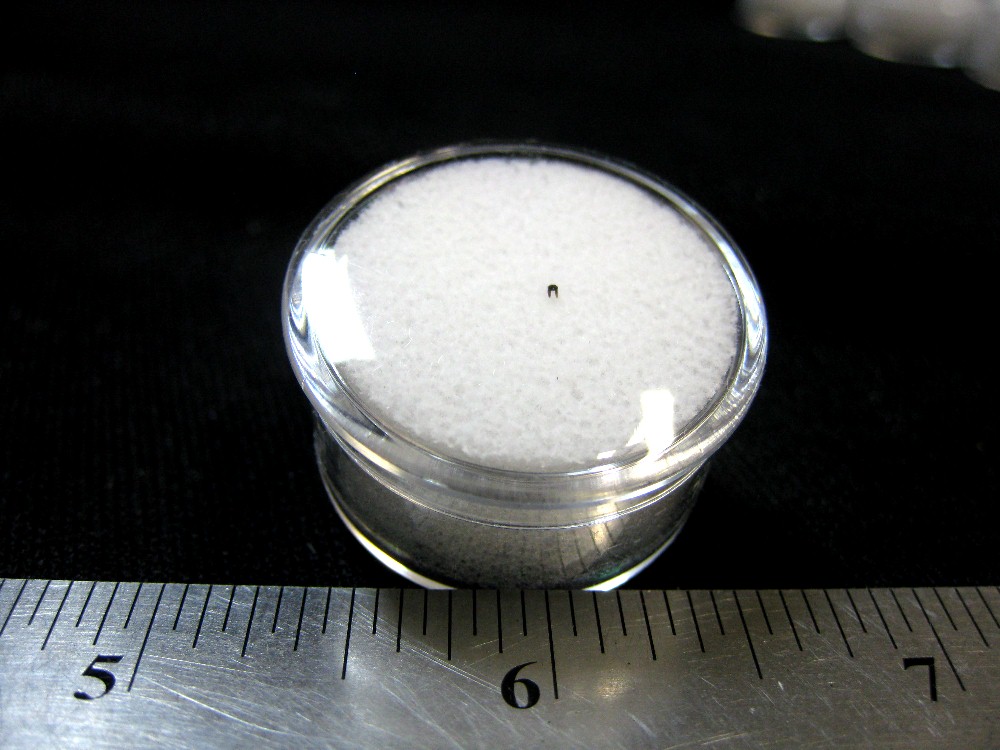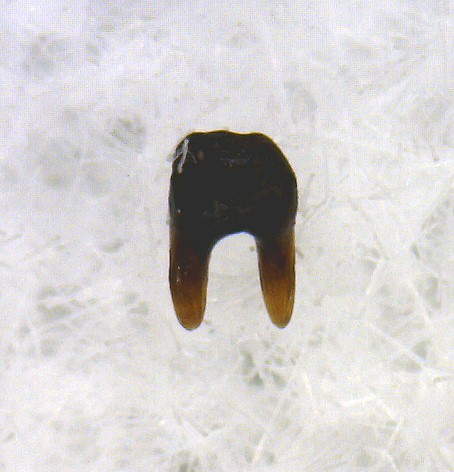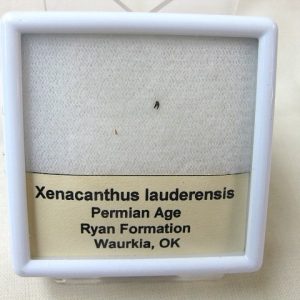Description
- Xenacanthus leuderensis
- Permian Age
- Ryan Formation
- Waurika, Oklahoma
- This TINY Specimen comes in the 1.25″ gem jar as shown.
Xenacanthus is a genus of prehistoric sharks. The first species of the genus lived in the later Devonian period, and they survived until the end of the Triassic, 202 million years ago. Fossils of various species have been found worldwide.
Xenacanthus had a number of features that distinguished it from modern sharks. This freshwater shark was about one meter (three feet) in length. The dorsal fin was ribbonlike and ran the entire length of the back and round the tail, where it joined with the anal fin. This arrangement resembles that of modern conger eels, and Xenacanthus probably swam in a similar manner. A distinctive spine projected from the back of the head and gave the genus its name. The teeth had an unusual “V” shape, and it probably fed on small crustaceans and heavily scaled palaeoniscid fishes.
As with all fossil sharks, Xenacanthus is mainly known because of fossilized teeth and spines.






